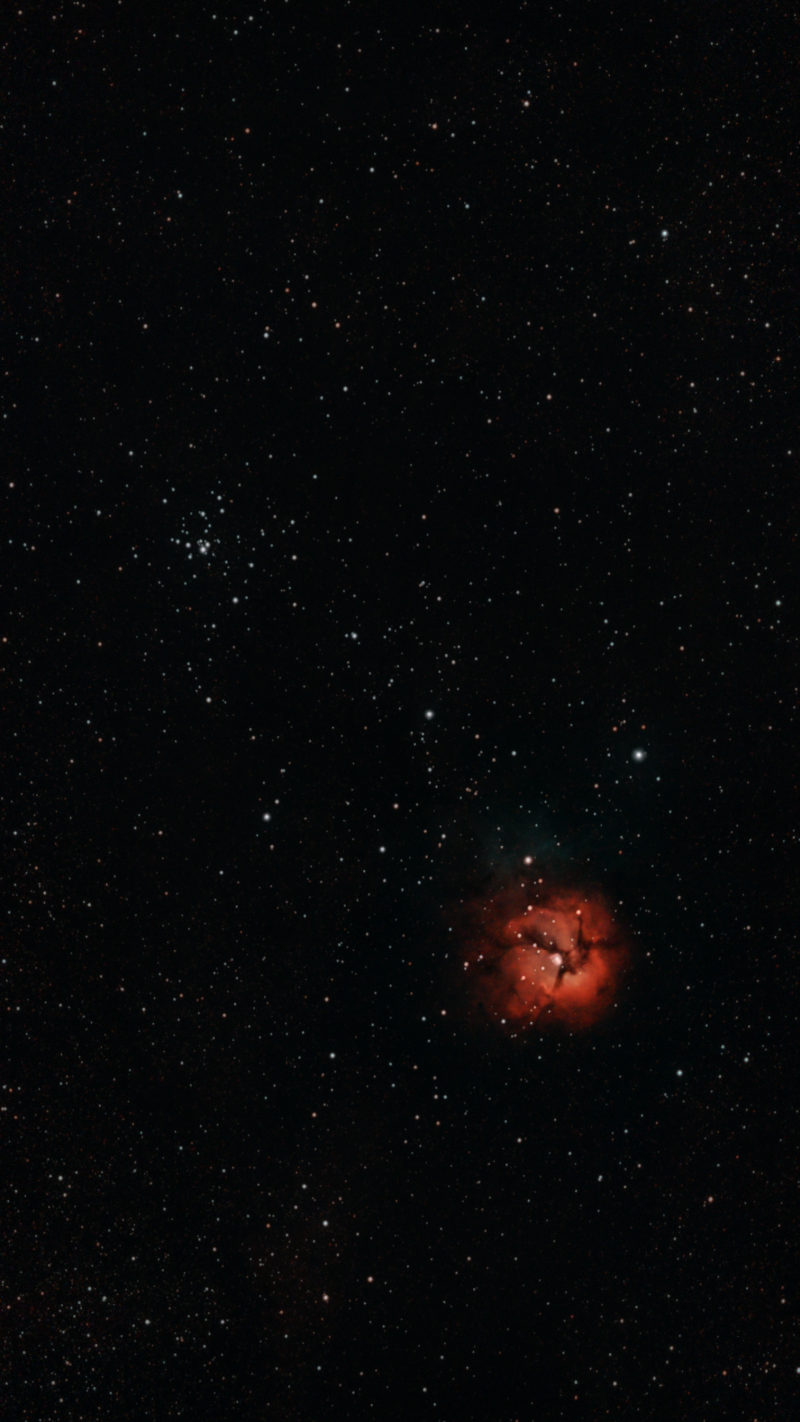New Messier Objects Captured! 🌌
Exciting News: This time, I managed to capture Messier 20 and Messier 21—two spectacular objects located in the Sagittarius region of our Milky Way! 🌌 These objects are relatively close to each other (from our perspective), which made it possible to capture both in a single shot! (*The actual number of shots taken was around 200, thanks to the stacking process, mosaic mode, and calibration. 😅)
Messier 20, also known as the Trifid Nebula (the red one), is an easy-to-see astronomical object located in the northwest of the Sagittarius constellation.
You can find it here "Teapot" asterism of Sagittarius. It's one of the brightest objects in this constellation, so even amateur astronomers with a mid-range telescope and sharp eyes can spot it! 👀 I've never looked at it directly through a telescope before, but I'm planning to do so during my next observation session—it's a must-see!
From the image, it might be hard to see at first, but Messier 20 actually contains a Dark Nebula as well! 🌫️ (Like the one I captured in my previous observations! Check it out here.) If you look closely, there should be a darker spot in the bottom-right corner of the nebula. Can you spot it? 😊 That dark region is called Barnard 85, a dense/thick cloud of dust and gas that won't even light go through.
The second object in the image: Messier 21, which is less prominent than Messier 20. It's an open star cluster located on the left side of the photo and is famously known as Webb's Cross. 🌟 Due to its dimness, it requires a very very keen eye (or binoculars at least!!) and nice dark night to spot. Its apparent magnitude is a modest +6.5. For comparison: Sirius — brightest star in the night sky outside the solar system, has a magnitude of -1.46 (the smaller the number, the brighter the object). 🌠
The photo was taken under what could be described as less-than-ideal conditions: it was a windy night with heavy clouds and high humidity in the atmosphere. 🌧️ Despite these challenges, I managed to capture these stunning objects! 🎉 You can see the final image here:

You can also notice a faint blue hue around Messier 20. That's a dense cloud of ionized gas and dust—part of the stellar nursery where new stars are being born! 🌌
For those of you who'd like to see the full-resolution version of this image, I've shared it on here: Check it out here! 📷
Final Thoughts: Beeing able to capture these Messier objects was a next conribution to my Messier Hunt catalogue you can find here. Even under less-than-perfect conditions, the result is nothing short of breathtaking. I hope this inspires you to take a closer look at the night sky and explore the wonders of our galaxy! 🌌